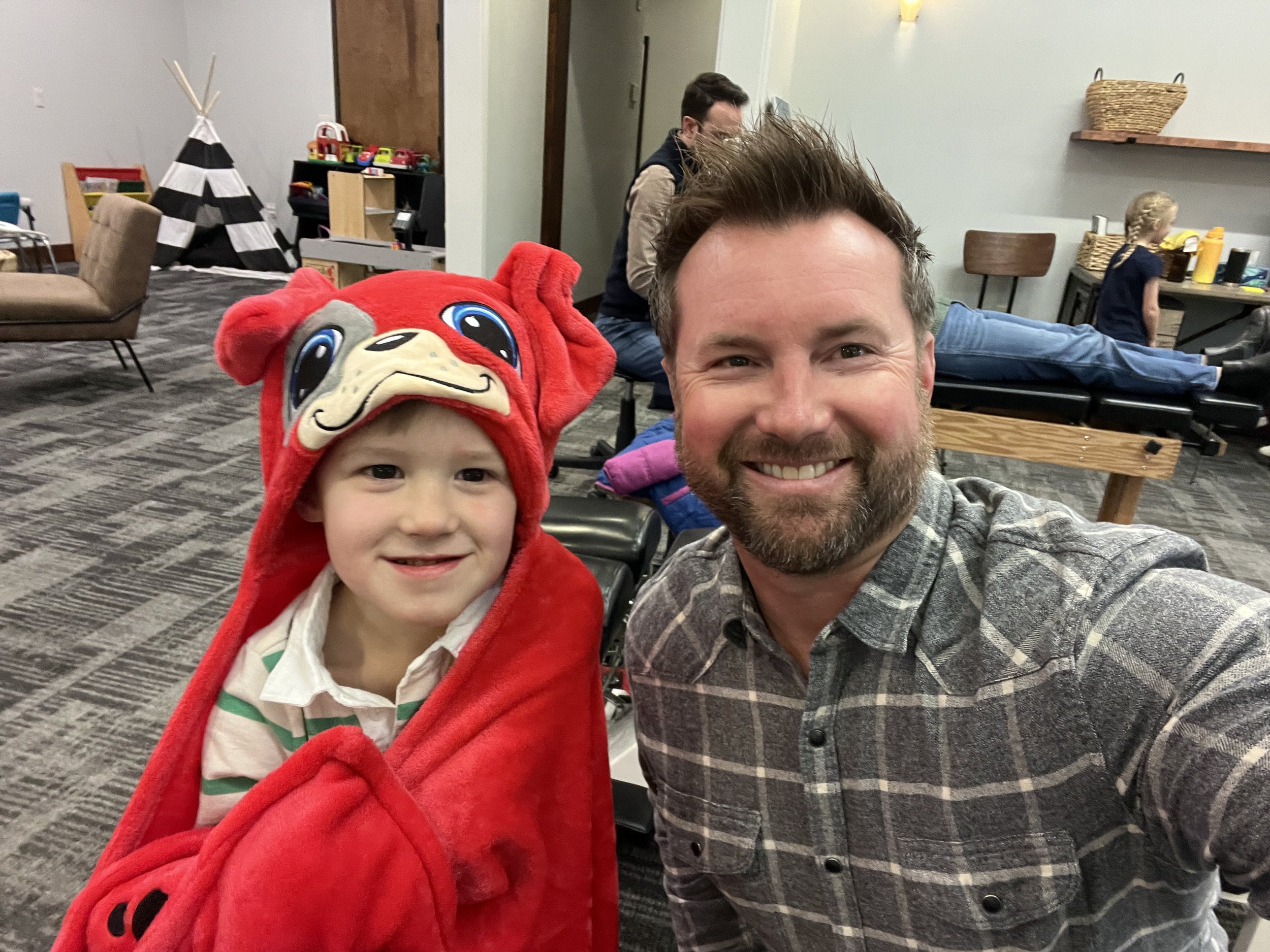🧠 Your Child's Brain-Body Breakthrough.
What’s Really Going On Beneath the Struggles—And How Healing Begins
“Why is my child struggling with things that seem so simple?”
“Why are we doing all the things—therapy, supplements, special diets—but still not seeing real change?”
If you’ve asked these questions, you’re not alone—and you’re not wrong for wanting more answers.
The problem may not be your child.
The problem may be that no one has looked at their nervous system.
At Purpose Driven Chiropractic, we help parents uncover the missing link: the brain-body connection. Let’s walk you through the core concepts we teach in our Brain-Body Breakthrough Workshop and in every consultation with a family like yours.
💪 1. Your Child Isn’t Broken—They’re Stuck in Survival Mode
If your child melts down when you change plans, freaks out at loud noises, or can’t fall asleep without a battle—it’s not because they’re “too sensitive” or undisciplined.
Their nervous system is stuck in fight-or-flight.
When the brain believes the world is unsafe or overwhelming, it shifts into survival mode. For some kids, that means hyperactivity, impulsivity, or sensory seeking. For others, it looks like withdrawal, constipation, shutdown, or refusal to speak.
👉 This isn’t a personality trait—it’s a neurological state.
Parents often say, “But sometimes they’re totally fine.” Yes—because when the nervous system feels safe, it can regulate. But if stress has been stacking since birth, it doesn’t take much to tip them back into overwhelm.
🔁 2. The Nervous System’s #1 Job: Keep Us Safe
The nervous system is constantly scanning the environment asking:
“Am I safe, or am I in danger?”
This process—called neuroception—is automatic and subconscious. Your child isn’t choosing to be reactive or avoidant; their brain is simply doing its best to survive.
And when the answer to that safety question is “no,” even if it’s just from overstimulation, change in routine, or unprocessed trauma—the nervous system shifts into:
Fight – yelling, hitting, intense emotional outbursts
Flight – running away, hyperactivity, restlessness
Freeze – zoning out, shutdown, selective mutism, apathy
This response blocks access to the part of the brain responsible for learning, calm, digestion, speech, and connection.
“The nervous system doesn’t operate from logic—it reacts to perception.”
That’s why kids don’t just grow out of nervous system stress…
They grow into bigger versions of it.
⚡️ 3. What Is Subluxation? A Nervous System Stuck in Overload
When stress is too much—birth trauma, illness, toxins, screen overload, maternal stress during pregnancy—the nervous system begins to maladapt.
We call this a subluxation:
Not just a bone “out of place,” but a neurological disconnection.
A pattern of tension and interference in how the brain and body talk to each other.
🔁 Repetitive stress without recovery → overstimulation
⚠ Loss of flexibility in the system → poor adaptability
🚫 Blocked brain-body communication → disorganized function
The result? A child who is wired to protect, not to process.
They struggle with:
Motor tone (tight or floppy muscles, clumsy coordination)
Sensory processing (either sensory-seeking or sensory-avoiding)
Emotional regulation (they go from 0 to 100 instantly)
Digestive issues (chronic constipation, food sensitivities, picky eating)
Speech delays (planning or coordinating speech is too difficult under stress)
“It’s like trying to run a high-speed computer with dial-up internet.”
Everything is harder because the signals just aren’t getting through efficiently.
🌪 4. Symptoms Are the Nervous System Crying Out
We often hear parents say, “We’re chasing symptoms and not getting anywhere.”
That’s because the symptoms are outputs from a system under stress.
When your child’s brain perceives chaos on the inside, it expresses chaos on the outside.
Here’s how those signals may show up:
Sleep issues → nervous system can’t downshift
Constipation → vagus nerve and digestive rhythm are out of sync
Meltdowns → stress hormones are too high to regulate
Speech delays → brain can’t access prefrontal cortex or motor planning
Toe walking → spinal cord tension or retained reflexes disrupting proprioception
You’re not seeing random symptoms.
You’re seeing a nervous system waving a red flag.
We just need to trace it back to the root so we can actually change the output.
🌱 5. Healing Isn’t Just Possible—It’s Expected
Here’s what gives us hope every day:
The nervous system is designed to adapt.
With the right input, it can rewire, regulate, and heal.
Dr. Heidi Haavik’s research shows that chiropractic adjustments improve brain-body communication, helping the brain more accurately perceive internal and external signals.
That means better: ✅ Emotional regulation
✅ Sensory integration
✅ Motor coordination
✅ Digestion and immune response
✅ Sleep cycles
✅ Speech and processing
“You don’t need a different child. You need a different approach.”
✅ Our 4-Step Healing Process at Purpose Driven Chiropractic
Step 1: Intake & History
We listen to your child’s full story—because healing begins with understanding.
Step 2: Insight Neurological Scans
We assess the actual function of your child’s nervous system using Heart Rate Variability (HRV), sEMG, and thermal scans.
Step 3: Restoration Plan
We develop a tailored care plan to help unwind stress and restore function.
Step 4: Ongoing Support
We adjust with precision and walk with you every step of the journey.
🔬 What Makes Our Brain-Body Approach Different
While therapies and supplements often address the outputs of the brain…
Chiropractic care changes the inputs.
And when the brain can accurately interpret its world, it can regulate, grow, connect, and thrive.
📖 Want to learn more?
Attend our next Brain-Body Breakthrough Workshop to go deeper into the science and stories behind this approach.
✨ Final Takeaway
Your child’s struggles are not a dead end.
They are a signal—a message that the nervous system is asking for support.
With the right care, the brain can adapt. Heal. Thrive.
“When the brain and body can talk, healing can happen.”


